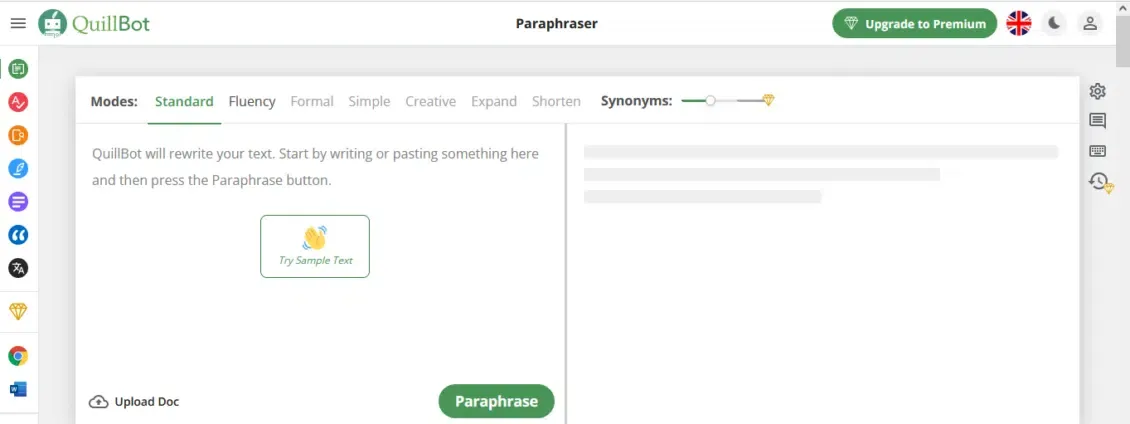The past decade has seen significant technological advancements thanks to the development of computing power and machine learning techniques, and as a result, we are increasingly relying on artificial intelligence tools in our work, studies, and daily tasks.
This tremendous advancement in AI technology has led to a change in the way journalists work, with machine learning algorithms now helping investigative journalists uncover hidden stories in data. Additionally, other tools assist journalists in gathering information, preparing interviews, translating and reviewing content, and much more.
 |
| The image was created by artificial intelligence. |
Journalists, especially experienced ones, consider artificial intelligence tools to be not a threat to their profession but rather an extremely important support tool. These tools enable them to quickly access new information, identify new trends, analyze large amounts of data, and automate repetitive tasks, which helps them increase productivity and save time.
While text creation tools like ChatGPT dominate most headlines, we find that there are many suitable tools for each stage of the journalistic process, starting from collecting information, to producing visual elements, creating audio versions of written articles, and ending with the publishing process.
1- Jasper ai robot:
Jasper, the robot, relies on the same language model used in the ChatGPT robot, but is trained to write original and creative content quickly. It can create long articles, social media posts, emails, and search engine optimized content in over 25 languages.
- Jasper Chat, which allows you to have a natural conversation with the robot to request new ideas about a topic you want to write about, or to help rephrase content while maintaining high quality.
- Creative Story, which helps you write creative stories in just a few minutes.
- Content Improver, a feature that works to improve the content to make it more attractive and engaging by allowing you to ask questions to your audience to encourage participation.
2- NewsWhip tool:
Monitoring events and topics as they happen is of utmost importance for journalists to keep up with the fast pace of news. This is where the tool NewsWhip comes in, which predicts the stories and topics that will spread in the coming hours by tracking audience interests and media, providing the clarity they need to make quick and confident decisions.
- A feature called "Highlights" that checks any topic you specify across all sites and networks for a certain period, compares the data it receives with the previous period, and then summarizes the most important changes you need to know to ensure that no important story is missed.
- "Peaks Highlight" feature that analyzes topics or events over longer periods, helping you quickly understand the events that have captured the attention of the audience and media.
3- Narakeet tool:
The Narakeet tool allows you to easily create the desired video clips for your work, in addition to converting texts into audio clips for use as voice-over commentary in the videos. It supports more than 80 languages, and offers over 500 voices in various dialects, genders, and ages.
4- Google's Pinpoint tool:
In 2020, Google launched the platform Journalist Studio, which is a digital platform that contains an integrated set of tools to help journalists perform their tasks more efficiently and creatively.
This platform currently contains 15 tools aimed exclusively at journalists, some of which are availablefor free. Among these tools is Pinpoint, which uses artificial intelligence in the process of searching within large groups of documents and PDF files, as well as exploring images, searching audio recordings and handwritten files, and email archives. The tool benefits from Google's search capabilities, artificial intelligence, and machine learning to assist journalists in writing and researching materials for urgent news, investigative stories, and more.
This tool allows you to search up to 200,000 files of different types and sizes for each group, and extract the key data in them. It also allows you to share documents and collaborate with other journalists.
5- QuillBot Tool:
QuillBot offers a range of text editing tools that rely on artificial intelligence, including a paraphrasing tool, a grammar checker, a text summarizer, and a plagiarism detector.
You can input your text into the grammar checker to receive instant results, or switch to the paraphrasing editor to rephrase your text. The tool offers multiple modes of paraphrasing, each with variations in the number of words replaced and language patterns, allowing you to customize your edits according to the style you desire.
6- Synthesia.io platform:
The platform Synthesia.io uses artificial intelligence to create professional videos from text in just minutes, supporting up to 120 languages. This makes it a great alternative to traditional video creation tools and processes that are complex in terms of time and cost.
This platform is known for its ease of use - all you need to do to create a professional video for your business is to select a template and avatar that represents you, then write the text you want to convert to voice and add any media you want. Finally, press the button to generate the video.


